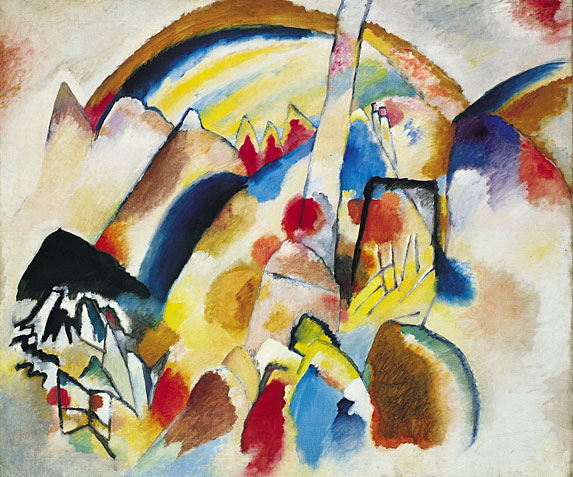I think we differ on the definition of abstract art or abstraction. I have always seen abstraction as anything that moves away from from perfect realism, to a small or great degree, to emphasize other aspects that the artists wish. But to double-check, I looked up the definition on line and found essentially the same thing:
From ArtLex dictionary on line, a definition of abstraction: "Imagery which departs from representational accuracy, to a variable range of possible degrees, for some reason other than verisimilitude. Abstract artists select and then exaggerate or simplify the forms suggested by the world around them."
Thus I do see the Chi Rho page from the Book of Kells and the figurative pages from the Lindisfarne Gospel as definitely abstract. They could have written the XP so much more easily, but they went wild with rich, decorative design to emphasize the wonderful spiritual meaning they saw in the gospels. The little heads are recognizably human, but they cannot be called realistic, so I see them as definitely abstract.
You are quite right that these early manuscripts are laden with symbolism. The ox for St. Luke, etc., as a way to, again, embellish their works with more meaning. One can get very absorbed studying these symbols, narratives and design. They are very rich. I enjoy them, but they are definitely not my specialty.
Now, the two twentieth century pieces that I included do border on non-objective art, a fancy term for works that do not even begin with reality but come solely from the artist's mind (the term that many mean when they use the term "abstract." ) 

Now, the Kandinsky, on the left, still seems somewhat (although minimally) based in earthly reality. I see hills and a tower and perhaps a rainbow, so then that would be seen as an abstraction. However, the Frank Stella on the right is definitely non-objective. I couldn't find the other image again and chose a sculpture that really activates 3-D space. I'm still uncertain as to how great his work is. It works well on a superficial, energetic level; I'm not sure that it touches my soul (as do almost all the other works I've shown here).
Now, art is so subjective. If you don't see the hills and rainbow that I do, then you might see Kandinsky's work as non-objective, and much of his work is like that. I show his work a great deal here on FR because it is difficult and my challenge is to get some FReepers to begin to see some meaning in abstraction. Much of what Kandinsky was doing is freeing line from color and freeing shape from outline and, in general, freeing art from past boundaries. At this point, because the camera can capture perfect reality, artists are exploring their deeper subjective and intuitive emotions and ideas and are transferring these to canvas. This work is harder to understand. I like Kandinsky's work a great deal; but later, postmodern work is a bit too free and formless for me. But that's another story....